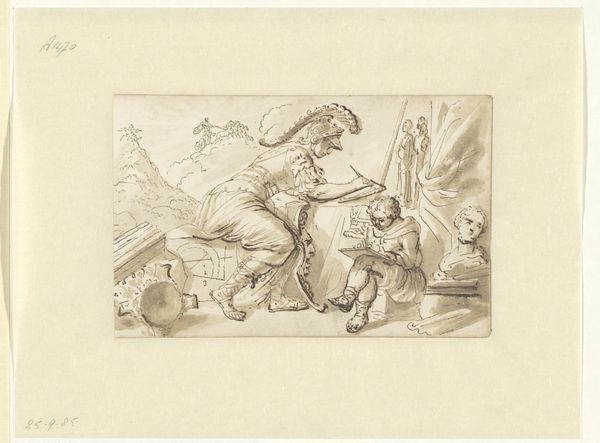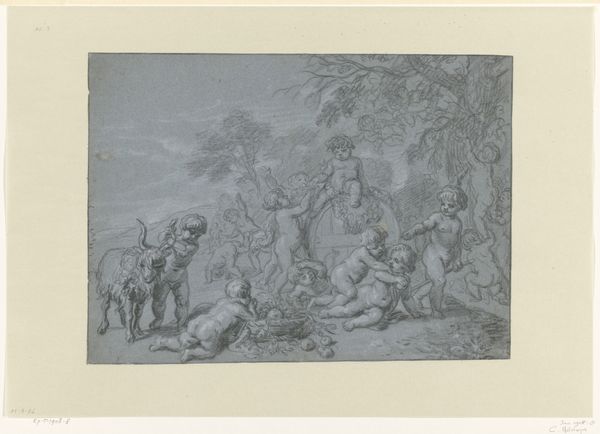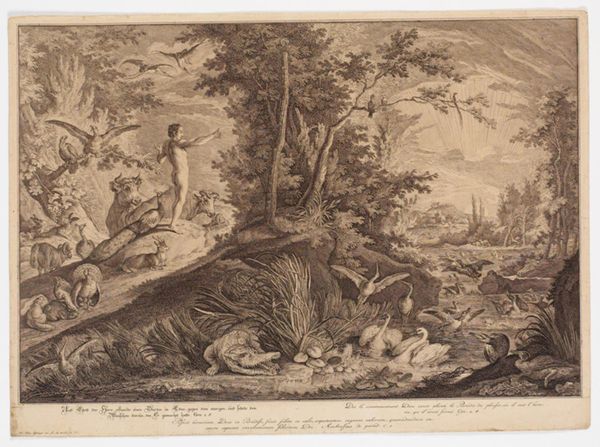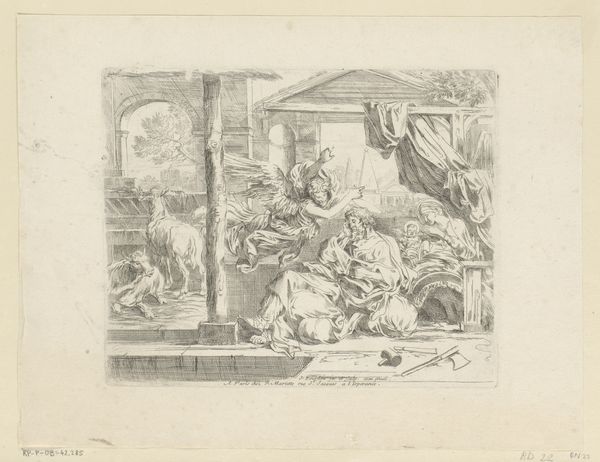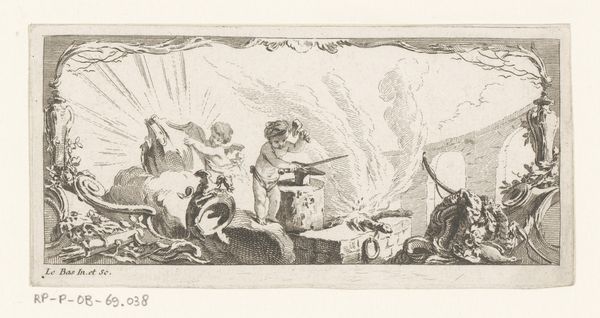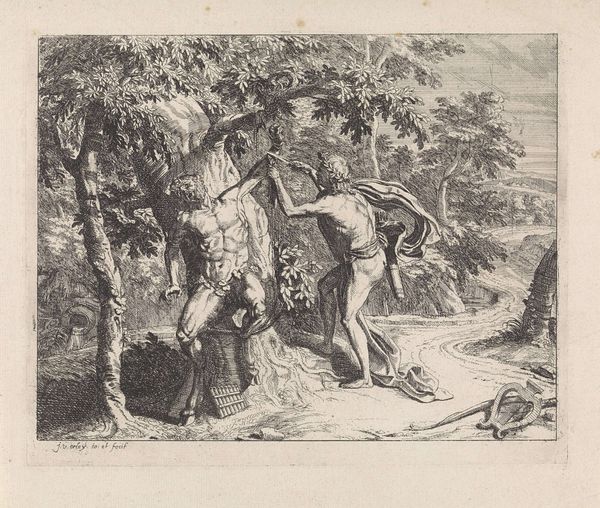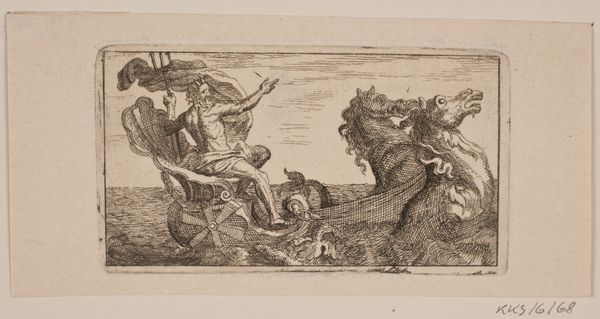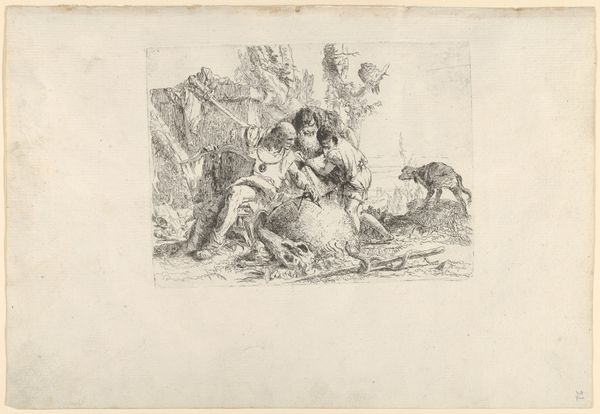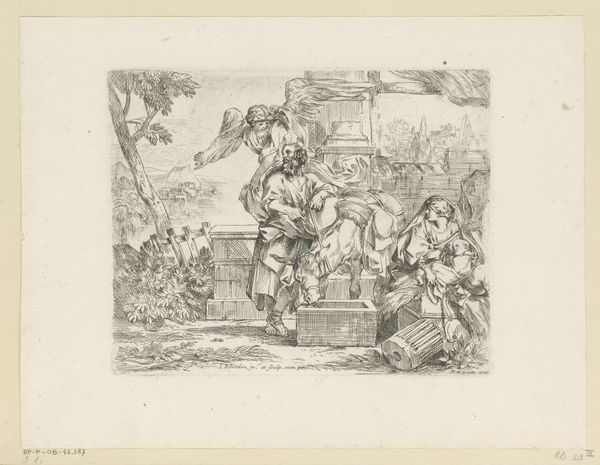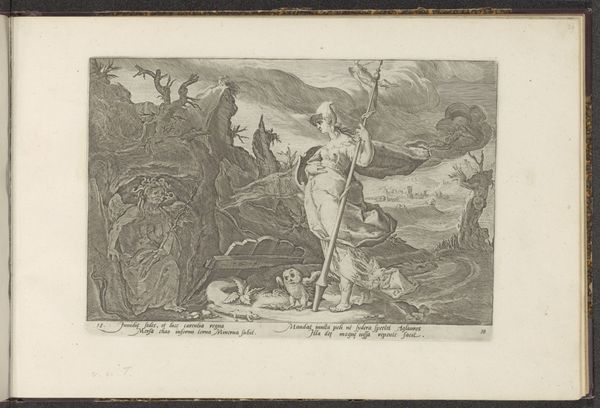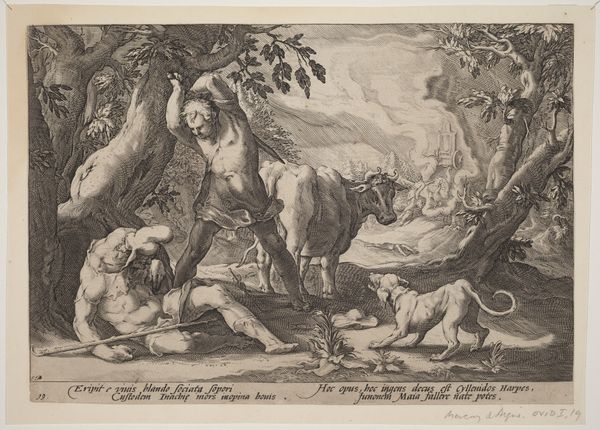
drawing, print, etching
#
portrait
#
drawing
#
baroque
# print
#
etching
#
figuration
#
female-nude
#
line
#
history-painting
#
nude
#
male-nude
Dimensions: Plate: 7 1/16 × 9 1/8 in. (17.9 × 23.2 cm) Sheet: 8 1/16 × 10 1/4 in. (20.5 × 26 cm)
Copyright: Public Domain
Curator: This print, “Pyramus and Thisbe,” by Cornelis Schut, likely created between 1610 and 1655, depicts a pivotal scene from Ovid's Metamorphoses, rendered through the intaglio process of etching. Editor: Gosh, even in monochrome, you feel the raw, pulsing heartbreak. Look at Thisbe; it's almost cinematic, that dramatic lighting and the gesture... like she's about to deliver the soliloquy of her life, right before collapsing over Pyramus. Curator: Etching allowed for a freedom of line that was quite distinct from engraving. Here, the lines build dramatic contrasts between light and shadow, animating both the figures and the background elements. The active mark-making enhances the tragedy being represented. We must acknowledge that printmaking processes in the early modern period were shaped by social circumstances; guild restrictions often influenced the organization of labor, distribution, and circulation of these images. Editor: I can see that. But more than any context, to me this tiny world rendered on paper bursts with emotion. Even the cherubs perched on the fountain, usually symbols of gaiety, seem subdued, reflective, which mirrors the story's intense emotion. Schut must have truly empathized with Ovid to render this such emotion. Curator: Absolutely, but that interpretation needs to address the materiality of the image and its location within larger printmaking production structures. Furthermore, how this particular mythological subject was reinterpreted at this time given its symbolic import relative to morality plays. Editor: Point taken, it's about process and product, right? For me it's the immediacy, as though I’m standing just behind Schut watching him, grief unfolding directly from his pen...or etching needle... onto the plate. Anyway it leaves you feeling wrung out doesn’t it? Curator: Indeed. Considering its production era and materiality reframes our emotional engagement, reminding us this scene resonates across diverse cultures. It emphasizes the connection between production and interpretation, acknowledging both artistic skill and underlying socio-economic systems that brought this haunting vision into being.
Comments
No comments
Be the first to comment and join the conversation on the ultimate creative platform.


